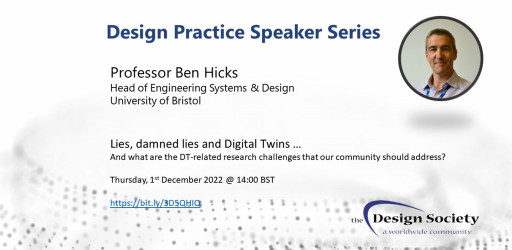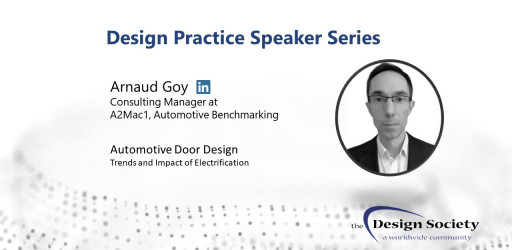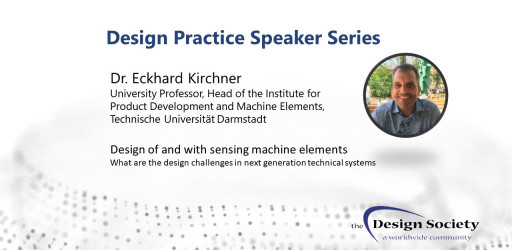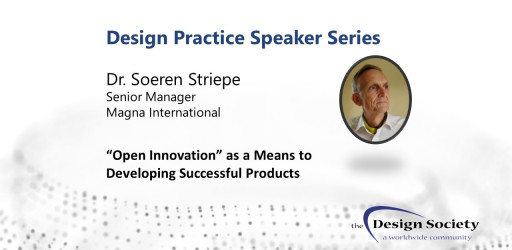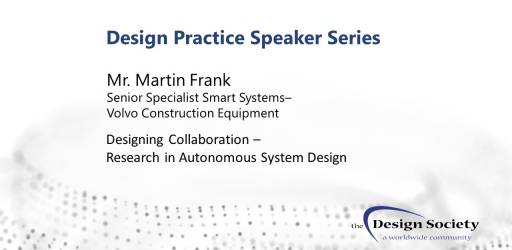Rauscher, Michael; Goehner, Peter // 2013
Mechatronic design is a multidisciplinary design and has to face several challenges. One challenge is to provide a common understanding of the mechatronic system to be developed to all participating ...
Luft, Thomas; Krehmer, Hartmut; Wartzack, Sandro // 2013
Increasing functionality, increasing individualization as well as the enormous complexity of modern products lead to steadily increasing challenges in the domain of product development. This causes a ...
Bingham, Guy; Southee, Darren; Page, Tom // 2013
This paper examines the traditional engineering-based provision delivered to Product Design and Technology (BSc) undergraduates at the Loughborough Design School and questions it relevancy against ...
Ranjbar Bourani, Mehdi; Cardin, Michel-Alexandre; Chong, Wen Sin; Atapattu, Ravindu; Foo, Kok Seng // 2013
This paper presents ongoing development for a novel integrated screening framework for flexibility analysis considering multi-domain uncertainty sources and multi-criteria for designing complex ...
Eriksson, Martin; Motte, Damien // 2013
Computer-based design analysis activities are an essential part of most product development projects in industry. An effective integration of the analysis activity into the product development ...
Creighton, Emma; Granville, Gary // 2013
This paper makes an argument for design learning as a framework to support the personal and academic development of second-level students. In presenting this argument the author discusses ...
Filippi, Stefano; Barattin, Daniela; Cascini, Gaetano // 2013
The engineering design community is debating since more than two decades on the development of models and methods suitable for analyzing the cognitive processes that occur within design activities. ...
Pasman, Gert; Romero Herrera, Natalia // 2013
What if both design students and design tutors could have real-time insights into how students actually experience their design process rather than after-the-fact reflections? And what if these ...
Ji, Haifeng; Honda, Tomonori; Yang, Maria C. // 2013
Assigning preferences to a set of design choices is an important activity in the design process. Previous research proposed a probabilistic approach to extracting preference information from ...
Aromaa, Susanna; Leino, Simo-Pekka; Viitaniemi, Juhani // 2013
Companies are meeting growing demands for readiness to respond rapidly to changes from the outside world. Companies actively manage and develop their competences by applying new technologies and ...
Marsh, Phillipa; Arthur, Leslie // 2013
Significant challenges can be encountered when introducing technology to design students, especially those with limited science and technology backgrounds. Often students display a fear or ...
De Roeck, Dries; Stoffels, Bart; Standaert, Achiel; Verwulgen, Stijn // 2013
This paper will focus on how digital aspects of design can be included in the very first phases of a design process. The research presented is based on a mapping of existing interactive prototyping ...
Röder, Benjamin; Gläßer, Tim; Birkhofer, Herbert // 2013
The acquisition of requirements is a crucial phase during the product development process. The created list of requirements determines costs, necessary time and iterative steps needed during the ...
Hess, Tim; Summers, Joshua David // 2013
The goal of this research is to investigate prototype use in conceptual design. In order to begin this line of study, we look first to current practices in industry. A case study involving two ...
Hooshmand, Amir; Schlaich, Marc; Belaus, Liliya; Campbell, Matthew // 2013
An important obstacle in the development of computational synthesis tools in engineering design is the difficulty in integrating the generation process with efficient simulation packages for ...
Wu, Dazhong; Schaefer, Dirk; Rosen, David W. // 2013
A Cloud-Based Design and Manufacturing (CBDM) System refers to an information and communication technology (ICT) system that facilitates design and manufacturing knowledge sharing between actors ...
Guerra, Andrea Luigi; Gidel, Thierry; Kendira, Atman; Vezzetti, Enrico; Jones, Alistair // 2013
This paper proposes a design strategy and a Computer Supported Cooperative Work in Design (CSCWD) system, which have co-evolved together to meet the goal of improving the Preliminary Design Process ...
Yilmaz, Seda; Daly, Shanna R.; Seifert, Colleen; Gonzalez, Richard // 2013
Design Heuristics are an idea generation tool based on empirical evidence from successful designs. The heuristics serve as cognitive âshortcutsâ that encourage exploration of novel directions ...
Chucholowski, Nepomuk; Langer, Stefan; Behncke, Florian; Lindemann, Udo // 2013
Engineering changes are a permanent feature of product development. They enable the development of successful and up-to-date products. However, many engineering changes can be avoided or at least ...
Eldirdiry, Omer; Ellman, Asko Uolevi // 2013
The significance of Virtual reality (VR) tools lies on its capability to simulate physical presence. Dealing with 3D model in VR Systems is less expensive, less dangerous and easier to make ...
Zhang, Zai Fang // 2013
A product service systems (PSS) is a combination of product and service to create value for both customers and manufacturers. The paper proposes a new performance-oriented design framework for PSS ...
Green, Clare Ruth // 2013
Part of an ongoing research project on inter-year team-working in design education, this paper looks at the cumulative effect of consecutive group projects as a learning experience.
Design process ...
Luedeke, Tobias; Vielhaber, Michael // 2013
Existing process models for the development of mechatronics products are not or only insufficiently considering the task of weight optimization during the design process. The measures of weight ...
Subrahmanian, Eswaran; Reich, Yoram; Krishnan, Sruthi // 2013
Designing progresses through continuous refinement of models. In today's design practice, these models get created and refined by multi-cultural, multidisciplinary teams that speak different ...

